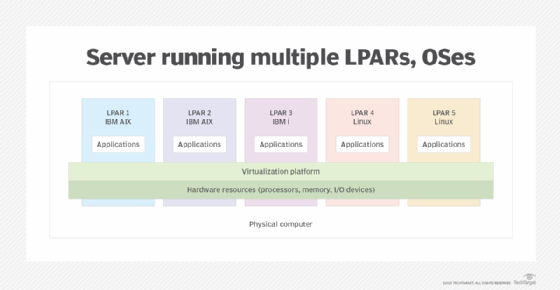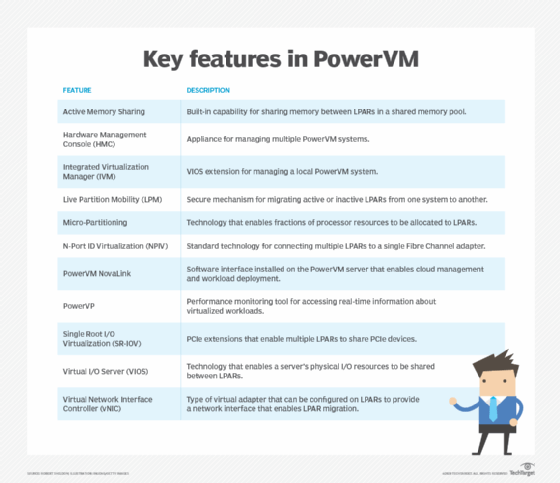logical partition (LPAR)
What is a logical partition (LPAR)?
A logical partition (LPAR) is a subset of a computer's processor, memory and I/O resources that behaves much like a physical server. A computer can host multiple LPARs, each one running independently of the other.
The LPAR has its own operating system (OS), applications and configurations, just like its physical counterpart. If an LPAR is set up with resources comparable to a physical server and they're both running the same OS and applications, they will seem like similar systems from the outside.
The number of logical partitions that can be created on a computer depends on its hardware, OS and available resources. For example, an IBM Power Systems server can host up to 1,000 LPARs. No matter how many LPARs are running on a physical computer, each one looks like an independent system.
Logical partition advantages
Logical partitions offer several important advantages over physical machines. They help to consolidate services and resources, reducing the need for equipment and the maintenance overhead that goes with it. Logical partitions also make it easy to assign hardware resources to different LPARs and to move those resources around as needed, providing IT teams with a great deal of flexibility. For example, a team can create mixed production and quality assurance environments on a single machine or run integrated clusters on that machine.
Logical partitions hosted on the same computer run in isolation from each other. They do not interfere with each other's operations no matter what operating systems or applications they run. For instance, an IT team can create LPARs that run IBM AIX, IBM i and Linux all on the same server. They can also create LPARs that run the same OS, with each LPAR using its own OS installation. The following figure represents a server running five LPARs with three different operating systems.

How logical partitions work
To facilitate LPAR deployments, a virtualization layer runs on top of the computer's physical layer, providing the structure necessary to create multiple independent environments on the same system. The virtualization platform can be made up of any combination of hardware, firmware or software. For example, IBM's PowerVM, which supports LPAR management, consists of a combination of all three.
When setting up a logical partition, an administrator assigns the resources necessary for the LPAR to run its anticipated workloads. The assigned resources are usually provided for the LPAR's exclusive use. However, an administrator might also configure resource sharing on the server to better utilize the hardware resources, although this typically requires additional layers of virtualization. Another option is to implement dynamic LPAR, which makes it possible to dynamically allocate and deallocate resources.

When multiple LPARs are deployed on the same system, they typically serve different purposes. For example, two LPARs might both run the same Linux distribution: one for production and one for testing. Because the production LPAR runs mission-critical applications, it is assigned more memory and processor resources than the second LPAR. The second LPAR is used to test new versions of the applications, so it requires fewer resources. The second LPAR makes it possible to run applications under development without affecting or interfering with the production environment.
Another way in which multiple LPARs might be used is to run different application components on the same machine. For example, an IT operations team might configure one LPAR to run an application's front-end webpages, another LPAR to run the middle-tier business services and a third LPAR to handle the back-end database. The team configures each LPAR environment with the resources it needs to support its specific operations. The LPARs do not interfere with each other's operations, but they can communicate with each other so the application components can work in a coordinated manner.
Logical partitioning was first studied by IBM in 1976 and later introduced by Amdahl and then IBM. Hitachi and Sun Microsystems also used forms of logical partitioning. Today, logical partitioning is associated primarily with IBM products, such as the IBM Power Systems and IBM Z mainframe computers.
Understand the pros and cons of the IBM PowerVM.
